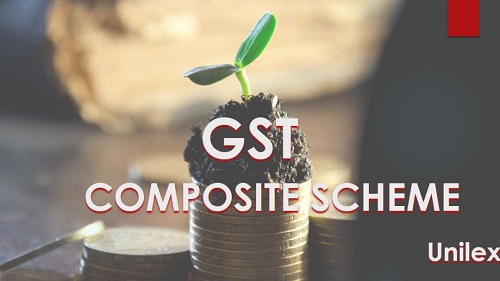What Is Goods & Service Tax (GST) Composition Scheme

GST brings in several compliance requirements, which makes it really hectic for small dealers. Thus the government seeks to grant relief to such small dealers by way of composition levy. The objective of composition scheme is to bring simplicity and to reduce the compliance cost for the small taxpayers. Moreover, it is optional and the eligible person opting for this scheme can pay tax at a prescribed percentage of his turnover every quarter, instead of paying tax at normal rate. Further, in case a person has registration in multiple states, the option to pay tax under composition scheme will have to be exercised for all States. Also, in case a taxable person has different business segments having same PAN as held by the taxable person, he must register all such businesses under the scheme.
Who are the eligible dealers:
- Aggregate turnover less that 50 Lacs: For the states of- Assam, Arunachal Pradesh, manipur, meghalaya, Mizoram, Sikkim, Nagaland, Tripura, Himachal Pradesh
- Aggregate turnover less that 75 Lacs: For states other than aforementioned
What does aggregate turnover mean: Aggregate turnover will be computed on the basis of turnover on an all India basis and will include value of all taxable supplies, exempt supplies and exports made by all persons with same PAN, but would exclude inward supplies under reverse charge as well as central, State/Union Territory and Integrated taxes and cess.
Who are the non-eligible dealers:
- Casual taxpayer or non-resident tax payer
- Supplier having aggregate to > 75 Lacs
- Supplier who has purchased goods/ services from URD
- Supplier of services, other than restaurant service
- Supply of goods, not taxable under GST
- Inter state outward supply of goods
- Supply of goods through e-commerce operator collecting tax u/s 52
How and when should a Composite Dealer pay tax:
Composite dealers must pay GST at the prescribed rates and electronically file quarterly returns in Form GSTR-4 on the GSTN common portal by the 18th of the month succeeding the quarter.
- No Input Tax Credit:The composite dealer (hereinafter referred to as Dealer 2) is out of the credit chain. Neither he can take credit on his input supplies, nor can the dealer buying goods/ services from a composite dealer (hereinafter referred to as Dealer 3) can avail input credit.In other words, the composite dealer shall pay tax on his purchases from registered dealer (hereinafter referred to as Dealer 1). And since he is not part of the credit chain, therefore, he shall not charge dealer 3 with tax, i.e., he shall not issue them a bill of supply, rather than a regular tax invoice. Thus the tax he paid to the dealer 1 while buying shall become part of his cost. Further, the GST that he has to pay at the prescribed nominal rates shall also be added to his cost. Now, though dealer 3 has indirectly paid tax in the increased cost of goods purchased from dealer 2, but since dealer 2 has not paid those collected tax to the government and has rather treated them as his cost by not availing the input credit himself, so even dealer 3 shall not be allowed to take the input tax credit.
- Scenario on purchase from unregistered dealer (URD): A composite dealer receiving input/ input services from an unregistered supplier, shall pay GST on such goods or services on reverse charge basis. Further, he is also required to furnish the details of stock, including the inward supply of goods received from unregistered persons held by him on the day preceding the date from which he opts to pay tax under the composition scheme, electronically, in FORM GST CMP-03, within a period of sixty days from the date on which the option for composition levy is exercised.
- Opting-in and out of the composition scheme:A person making application for fresh registration under GST may opt for composition levy at the time of making application for registration under Part B of FORM GST REG-01.A person, who has already obtained registration, may opt for payment under composition levy by giving an electronic intimation in Form GST CMP-02 before beginning of the financial year.A person paying tax under composition levy may withdraw voluntarily from the scheme by filing a duly signed or verified application in FORM GST CMP-04 and a statement in FORM GST ITC-01containing details of the stock of inputs and inputs contained in semi-finished or finished goods held in stock by him on the date of withdrawal, within a period of thirty days of withdrawal.
Recent posts

U
Unilex
U
Unilex
U
Unilex
U
Unilex
U
Unilex








 “I have registered my PVT LTD company and Trade MARK through UNILEX, had a smooth process and also their price are very reasonable across the industry.
Great Work Guys.......”
“I have registered my PVT LTD company and Trade MARK through UNILEX, had a smooth process and also their price are very reasonable across the industry.
Great Work Guys.......”
Your comment